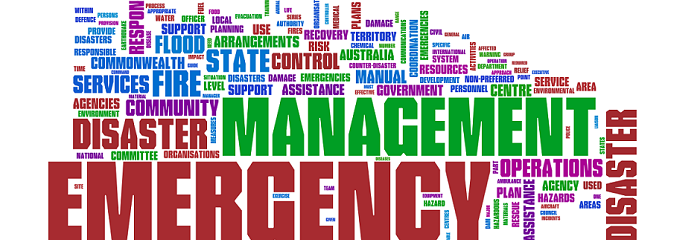Emergencies arrive in many forms, they often require a “whole government” approach that includes community involvement. Despite high levels of commitment, poor coordination between relevant parties is the greatest impediment to efficient disaster management. What's needed is an “all hazards, all agencies” approach that spans government agencies and community groups to address a full range of potential emergencies.
The primary objective is to optimize prevention, preparation, response, and recovery from any emergency - regardless of cause, size, location, or complexity. The overarching goal is to reduce loss of life, damage to property, and harm to the environment. Integrated emergency management is best achieved through the creation of a single repository of information for planning, preparation, response, and recovery. This shared data resource must serve many parties, including emergency services organizations, government agencies, nongovernmental organizations (NGOs), private infrastructure operators, and community groups. Information in the repository must be secure, accessible, and relevant for many different users.
Kamptos pre-configured SAP (EDMS) solutions for emergency and disaster management leverage the latest technology innovations, enabling faster anticipation of emergency dynamics and better-informed decision making. The software improves real-time visibility across agencies and systems by allowing participants to build a coherent information base and solution framework that supports optimized emergency planning, preparation, response, and recovery.
- Effective Prevention - Manage and improve mitigation activities to prevent hazards from developing into disasters or emergencies or reduce their impact when they do occur.
- Complete Preparedness - Develop action plans so that national, regional, and local agencies and communities are ready for any type of hazard or threat - whenever a disaster strikes.
- Optimized Response - Improve multiagency interoperability and resource allocation during emergencies through access to real-time information that is accurate, consistent, and shareable.
- Sustained Recovery - Improve resolution and rebuilding capabilities, including grants management and program management, so that the affected area can be restored to its previous state.
- Community Preparedness - Communicate relevant information to constituents to raise levels of preparedness for emergency and disaster situations.
- Volunteer Management - Enhance recruiting and manage the creation of a volunteer register where volunteers and administrators can access contact data, qualifications, training, availability, and medical history.
- Standby Deployment - Use fostering and scheduling tools to maintain peak readiness and assign resources to activities.
- Material Management - Predefine future material needs through an automated contract process whereby dedicated vendors can be alerted in case of an emergency.
- Asset Management - Minimize the risk that resources such as equipment and vehicles will fail during an emergency.
- Learning and Training - Be confident that that staff and volunteers have the skills and knowledge they need.
- Victim management - Assess the condition of those in need of help and match them to appropriate hospitals or shelters.
- Grant management - Help families and businesses get financial assistance and establish a central location for all documents, eligibility assessments, and transactions related to a particular grant application.
- Procurement and Contract Management - Support private sector participation in recovery efforts by helping to provide legally compliant documents and procurement processes.

